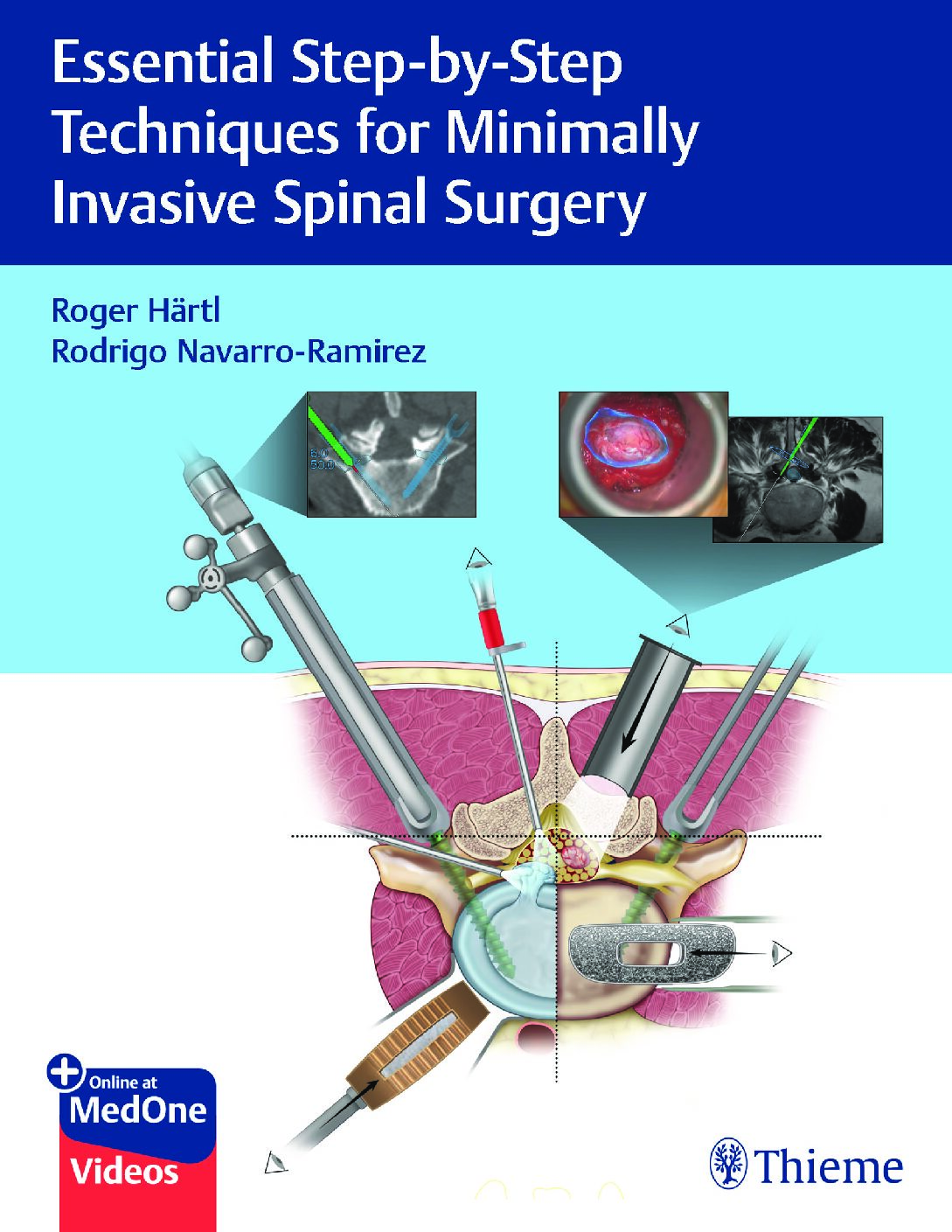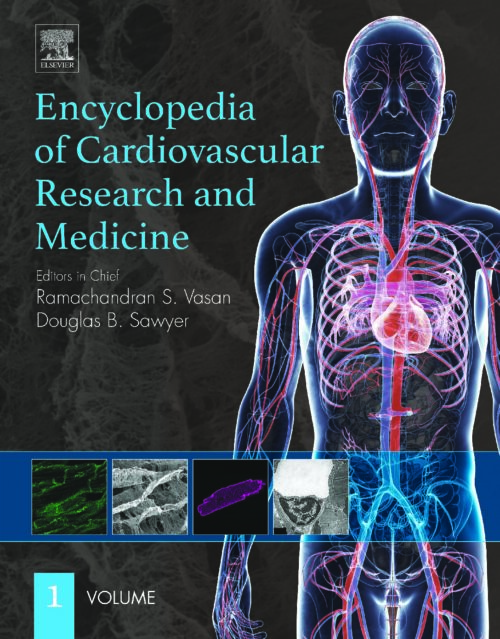In the US, over 1.5 million instrumented spinal surgeries are carried out annually. Minimally invasive spine surgery (MISS) techniques can be used to complete or partially accomplish the majority of decompressions and roughly 50% of fusion surgeries. MISS methods’ full potential is still untapped. The most thorough and in-depth textbook on this subject to date is titled Essential Step-by-Step Techniques for Minimally Invasive Spinal Surgery and was written by renowned MISS neurosurgeon Roger Härtl, spine-neurosurgeon Rodrigo Navarro-Ramirez, and an impressive group of international multidisciplinary contributors.
| No# | Contents | page |
| Part I Introduction to MISS | 1 | |
| Chapter 1 | Definition of MISS: The “6 Ts”: Target/Technology/Technique/Teaching and Training/Testing/ Talent | 2 |
| Roger Härtl, Sertac Kirnaz, Juan Del Castillo-Calcáneo, and Ibrahim Hussain | ||
| Chapter 2 | Global MISS: Perspectives from Asia, Australia, Europe, Middle East, North America, and South America | 14 |
| Part II MISS Target | 21 | |
| Chapter 3 | Target Philosophy in Degenerative Spinal Disorders: Correlation of Clinical Presentation, Physical Examination, and Response to Interventional Procedures | 22 |
| Bridget T Carey, Jaspal Ricky Singh, Neel Mehta, Taylor Wong, Sertac Kirnaz, Michael Sein, and Roger Härtl | ||
| Chapter 4 | Deformity and MIS: Limitation or Opportunity? | 41 |
| Catherine Miller, Ibrahim Hussain, Juan S Uribe, Kai-Ming Fu, and Praveen Mummaneni | ||
| Chapter 5 | Target: The Muscle as a Pain Generator and Key Element to Protect during MIS Surgery | 49 |
| Norman Marcus and Roger Härtl | ||
| Part III MISS Technology | 55 | |
| Chapter 6 | Tubular and Specular Retractors in MIS | 56 |
| Christoph Wipplinger, Sara Lener, Sertac Kirnaz, Ahmed Abdelsalam, Roger Härtl, and Claudius Thomé | ||
| Chapter 7 | Navigation in MISS | 61 |
| Rodrigo Navarro-Ramirez, Alisson R Teles, Franziska Anna Schmidt, Sertac Kirnaz, and Roger Härtl | ||
| Chapter 8 | Robotics: Background and Current Role | 79 |
| Sean M Barber, Meng Huang, Paul Holman, and Isador H Lieberman | ||
| Chapter 9 | Microscopein MISS | 87 |
| Avelino Parajón, Robert Nicholas Hernandez, Sertac Kirnaz, and Andreas Korge | ||
| Chapter 10 | Endoscope in MISS: How to Adopt and Change | 95 |
| Albert E Telfeian | ||
| Part IV MISS Techniques | 102 | |
| Chapter 11 | Three Surgical Principles of MISS: Contralateral Decompression, Minimize Instability, and Indirect Decompression | 103 |
| Ibrahim Hussain, Rodrigo Navarro-Ramirez, Sertac Kirnaz, and Roger Härtl | ||
| Chapter 12 | Surgical Techniques and Instrumentation in MISS | 110 |
| Chapter 13 | Dural Repair in MISS and CSF Leak Management | 114 |
| Ramin A Morshed, Young M Lee, and Dean Chou | ||
| Chapter 14 | How to Achieve a Successful Fusion with MIS Techniques | 118 |
| Chapter 15 | Surgical Tips, Tricks, and Techniques to Minimize Invasiveness; General Advice on How to Handle Fluoroscopy, Blood Loss, and Infection Rates | 126 |
| Eric HElowitz | ||
| Chapter 16 | PerioperativeManagement; ERAS | 132 |
| Damian Brusko, Karthik Madhavan,and Michael Y Wang | ||
| Chapter 17 | Key Elements to Safely Transition from Inpatient to Outpatient Spine Surgery | 136 |
| Chapter 18 | Posterior Cervical Foraminotomy/Discectomy | 141 |
| Luca Papavero | ||
| Chapter 19 | Unilateral Tubular Over-the-TopCervical Laminectomy for Cervical Stenosis | 149 |
| Robert Nicholas Hernandez, Sergio Soriano-Solis, and José-Antonio Soriano-Sánchez | ||
| Chapter 20 | Posterior Cervical Facet Cages DTRAX | 157 |
| Melissa Meyer, John B Ferraro, and Rahul V Shah | ||
| Chapter 21 | MIS Endoscopic Approachesfor OC–C1–C2 Pathology | 163 |
| Rafael Uribe, Sertac Kirnaz, and Theodore H Schwartz | ||
| Chapter 22 | Posterior Muscle Sparing Approachesfor Decompression, Laminoplasty, and Laminectomy | 171 |
| Lionel NMetz, Martin H | ||
| Chapter 23 | Minimally Invasive C1/C2 Fusion | 182 |
| Marcus Richter | ||
| Chapter 24 | Cervical Three-DimensionalNavigation to Facilitate Minimally Invasive Spine Surgery | 191 |
| Kalani, Iain H | ||
| Chapter 25 | Thoracic Vertebroplasty and Kyphoplasty | 197 |
| Justin Schwarz, Srikanth Boddu, Ibrahim Hussain, Alejandro Santillan, and Athos Patsalides | ||
| Chapter 26 | Thoracic Discectomy: Posterior Transpedicular Tubular Approach | 203 |
| Witiw, Brian T | ||
| Chapter 27 | Lateral Retropleural Thoracic Discectomy and Corpectomy | 207 |
| Xu, Jakub Godzik | ||
| Chapter 28 | Mini-OpenPedicle Subtraction Osteotomy for DeformityCorrection | 214 |
| Cory Hartman,Jakub Godzik, Esteban Quiceno, and Juan S Uribe | ||
| Chapter 29 | Posterior Paramedian Endoscopic Thoracic Discectomy | 220 |
| Raj Nangunoori, Diana H Jho, David H Jho, and Hae-Dong Jho | ||
| Chapter 30 | Transpedicular Corpectomy and Fusion for Metastatic Tumor or Infection | 226 |
| Young M Lee, Ramin A Morshed, and Dean Chou | ||
| Chapter 31 | Techniques to Decreasethe Invasiveness of Thoracic DeformityCorrection | 231 |
| Brenton Pennicooke, Robert Nicholas Hernandez, and Michael S Virk | ||
| Chapter 32 | Unilateral Lumbar Approach for Over-the-TopBilateral Decompression | 238 |
| Franziska C Heider, Andreas Korge, and H Michael Mayer | ||
| Chapter 33 | Far-Lateral Lumbar Discectomies | 245 |
| Eric H Elowitz | ||
| Chapter 34 | Percutaneous Full-Endoscopic Interlaminar Approach for Lumbar Pathologies: Disc | |
| Herniation and Lumbar Spinal Stenosis Javier Quillo-Olveraand Jin-Sung Luke Kim | ||
| Chapter 35 | Transforaminal Approach for Endoscopic Decompression | 262 |
| Ralf Wagner | ||
| Chapter 36 | Endoscopic Interlaminar Lumbar Laminectomy | 273 |
| Christoph Hofstetter | ||
| Chapter 37 | LLIF T12/L1-L2 | 279 |
| Cristiano Magalhães Menezes and Érica GodinhoMenezes | ||
| Chapter 38 | LLIF L2/3/4/5 | 286 |
| Frank M Phillips and SravishtIyer | ||
| Chapter 39 | Translumbar Surgery Comparison: Four Surgeonsand Regions | 293 |
| Luiz Pimenta, Khai Lam†, Massimo Balsano, and Masato Tanaka | ||
| Chapter 40 | Minimally Invasive Oblique Anterior Lumbar Interbody Fusion | 308 |
| Chapter 41 | Maximum Access Surgery Posterior Lumbar Interbody Fusion | 314 |
| Joel Martin, Laura Hein, Pavan S Upadhyayula, Vincent Cheung, and William Taylor | ||
| Chapter 42 | MIS-TLIF with Total Navigation and Expandable Interbody Cages | 322 |
| Rodrigo Navarro-Ramirez, Sertac Kirnaz, and Roger Härtl | ||
| Chapter 43 | MIS-TLIF Comparison: Four Surgeonsand Regions | 331 |
| Chapter 44 | Percutaneous Pedicle Screw Fixation and MISS SI Joint Fusion | 343 |
| Greg Anderson | ||
| Chapter 45 | Intradural ExtramedullaryTumors | 350 |
| Hani Malone, Richard G Fessler, and John E O’Toole | ||
| Chapter 46 | Three-DimensionalNavigation in Lumbar Spine to Facilitate Minimally Invasive Spine Surgery | 356 |
| Jang W Yoon, Gaetano De Biase, and Eric W Nottmeier | ||
| Chapter 47 | Strategies to Minimize Invasiveness and OptimizeSuccess: OC Fusion | 360 |
| Bernhard Meyer and Sandro M Krieg | ||
| Chapter 48 | Strategies to Minimize Invasiveness and OptimizeSuccess: Cervical Front/Back Surgery for Deformity Correction | 367 |
| Lee A Tan and K Daniel Riew | ||
| Chapter 49 | MIS Cervical Pedicle Screws—Percutaneous-Assisted Technique | 373 |
| Marcus Richter and Philipp Hartung | ||
| Chapter 50 | Treatmentof Degenerative Lumbar Scoliosis with Minimally Invasive MultilevelLLIF in | |
| Combination with Lateral ALIF | ||
| Chapter 51 | Strategies to Minimize Invasiveness and OptimizeSuccess: T10-Pelvis | 395 |
| Chapter 52 | Lifestyle Medicine:Optimizing Recovery FollowingMIS of the Spine | 403 |
| Jaspal Ricky Singh and Kyle F Worell | ||
| Chapter 53 | Three-DimensionalNavigation in MISS | 410 |
| Bernhard Meyer and Yu-Mi Ryang | ||
| Part V Teaching and Training/Future | 413 | |
| Chapter 54 | Surgical Training and Simulationin MISS | 414 |
| Chapter 55 | The Role of Biologics in Minimally Invasive Spine Surgery | 420 |
| Chapter 56 | Summary and Outlook—Future of Lumbar Minimally Invasive Surgery | 423 |
| Joel Martin, Laura Hein, Vincent Cheung, and William Taylor | ||
| Chapter 57 | AchievingMISS on a Global Level | 427 |
| Roger Härtl, Franziska Anna Schmidt, Taylor Wong, and Sertac Kirnaz | ||
| Index | 430 | |






Avis
Il n’y a pas encore d’avis.